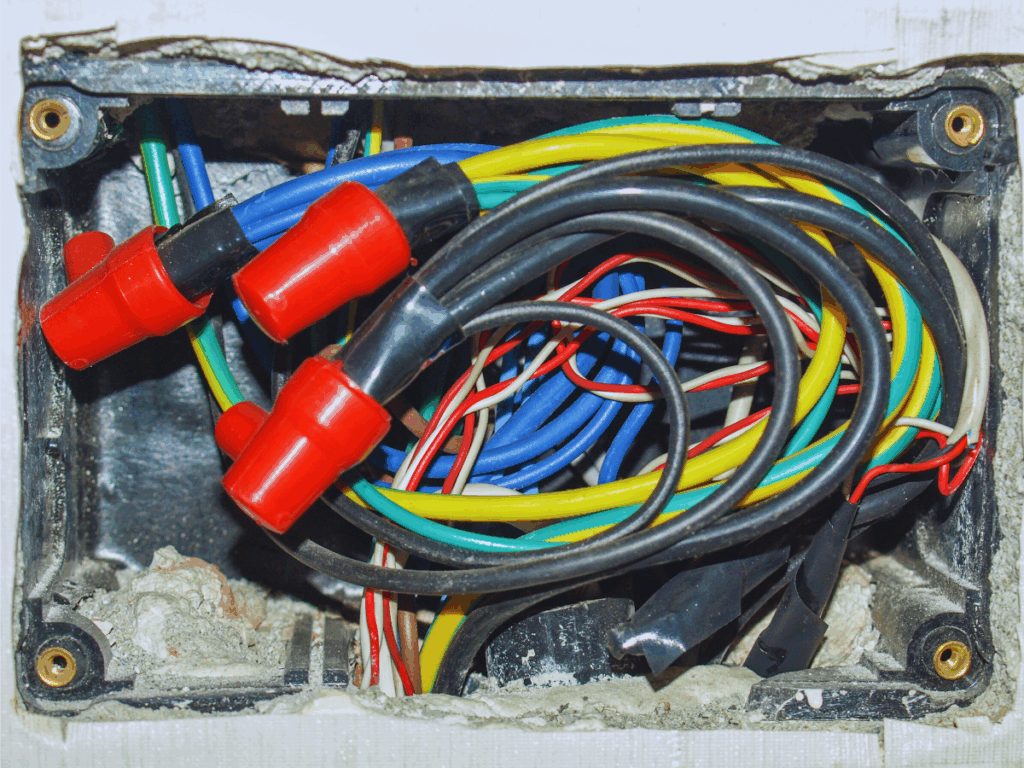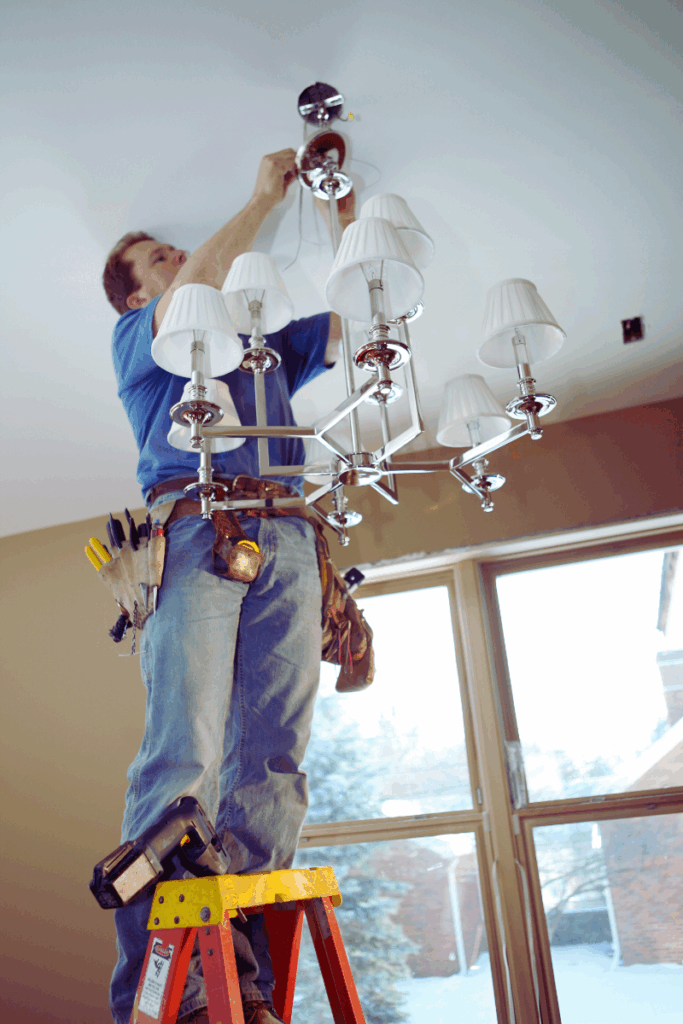 If you are thinking about adding a chandelier to your home, you’ll need to consider adding a junction box. In most cases, it’s required as part of Pompano building and safety codes.
If you are thinking about adding a chandelier to your home, you’ll need to consider adding a junction box. In most cases, it’s required as part of Pompano building and safety codes.
Including a junction box can be critical for grounding and overall safety in addition to ensuring proper wiring.
Let’s take a look at what a junction box is, why you shouldn’t skip it and how the folks at Mister Sparky can help you through the process of choosing and installing one.
Quick Takeaways
- Every hardwired chandelier must have a junction box — it’s not optional.
- The junction box houses and protects electrical connections from damage or short circuits.
- It also provides structural support to hold the chandelier’s weight safely.
- Florida electrical code and the National Electrical Code (NEC) both require it.
- Mister Sparky electricians install UL-rated junction boxes designed for chandeliers of all sizes.
What Is a Junction Box?
As the name suggests, a junction box is where wires can be safely enclosed away from the elements. As it relates to a chandelier, a junction box also serves as an additional ground, which can reduce the risk of an electric shock or other negative event taking place.
There are multiple different types of junction boxes, and they should be installed by a professional in all cases.
Why a Junction Box Is Required for Chandeliers
1. Safety and Code Compliance
National Electrical Code (NEC) 314 says that all ceiling-mounted fixtures must have a junction box. Therefore, having one ensures that you are working in accordance with state and national codes. It also reduces the risk of short, arc or other issues related to exposed wires.
2. Structural Support
A chandelier is heavier than a typical light fixture, which means that it needs extra support. The junction box can handle the extra weight and ensure proper mounting, which reduces the risk of ceiling collapse.
3. Secure Wire Connections
Proper connections reduce the risk of shorts or other issues caused by exposed wires. The connections should be UL-approved, and your contractor can typically ensure that this is the case.
4. Grounding and Fire Prevention
The use of a junction box can reduce the risk of a shock or electrical fire. It can also help to contain stray extra voltage that may be created when the chandelier is in use.
What Happens If You Don’t Use a Junction Box?
Failing to use a junction box may increase the risk of an electrical fire. You may also fail an electrical inspection or be on the hook for any damages caused to your home as your insurance company might deny a claim.
Types of Junction Boxes Used for Chandeliers
1. Standard Ceiling Electrical Box
This is used for fixtures less than 50 pounds. It is typically made of metal or plastic and will mount flush to the wall.
2. Fan-Rated or Heavy-Duty Ceiling Box
Often used for chandeliers weighing up to 150 pounds and is supported by brackets. Such a tool is considered almost mandatory for medium or large fixtures.
3. Adjustable Bar Hanger Box
The adjustable bar hanger box is ideal for chandeliers hung in an open ceiling concept. As the name suggests, the bar hanger sits between ceiling joists and can be adjusted as needed.
4. Custom or Recessed Mount Boxes
A custom or recessed product is ideal for higher vaulted or cathedral ceilings. It can be ideal if you’re looking for a balance between safety and visual appeal.
How Professionals Install a Junction Box for a Chandelier
 Step 1: Determine the type of ceiling you have and how much weight it can support.
Step 1: Determine the type of ceiling you have and how much weight it can support.
Step 2: Determine the junction box that best meets your needs.
Step 3: Secure the box to a joist or ceiling mount.
Step 4: Ground the wires in accordance with applicable codes.
Step 5: Mount a chandelier bracket to the junction box support if necessary.
Step 6: Run tests to ensure safe operation of the chandelier.
Why You Shouldn’t DIY a Junction Box Installation
Working with electrical components is dangerous, and for that reason, Florida code requires that a professional perform the work. Thats why we don’t recommend DIY jobs.
The folks at Mister Sparky can install a chandelier in a prompt and proper manner the first time.
Local Considerations for Pompano & South Florida Homes
If you’re using a metal box, make sure that it is corrosion-proof as humidity can lead to rust. The professionals at Mister Sparky ensure that all work is done with local conditions in mind and also complies with Broward County safety and building codes.
FAQs
Do all chandeliers need a junction box?
Yes, any hardwired ceiling fixture must have one regardless of their size to conform with local codes.
Can I hang a chandelier without a junction box?
No as the chandelier isn’t grounded, secure or compliant with NEC standards if no junction box is present.
How do I know if my existing ceiling has a junction box?
If a light fixture is already installed, you might already have on in your home. However, you’ll need to have an electrician verify if it’s properly rated for your chandelier’s weight.
Can I upgrade my existing box to support a heavier chandelier?
Electricians can replace your current box with a fan-rated or heavy-duty junction box designed for heavier loads that your new chandelier requires.
How much weight can a junction box hold?
Standard boxes hold up to 50 pounds while fan-rated boxes can handle 150 pounds or more depending on what type of ceiling your home has.
Let Mister Sparky Light Up Your Home
 If you are thinking of adding or upgrading a chandelier, give the folks at Mister Sparky in Pompano a call today.
If you are thinking of adding or upgrading a chandelier, give the folks at Mister Sparky in Pompano a call today.
Remember, you won’t put up with any malarky when you call Mister Sparky, and we’ll ensure that your home looks great and is safe from electrical fires or other hazards.